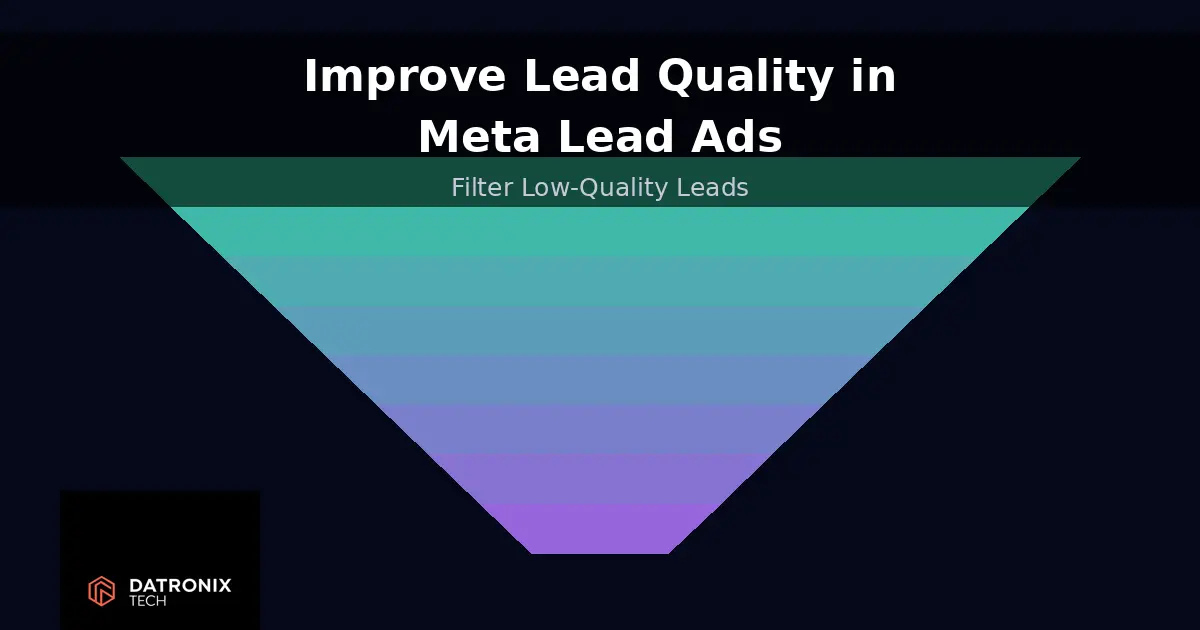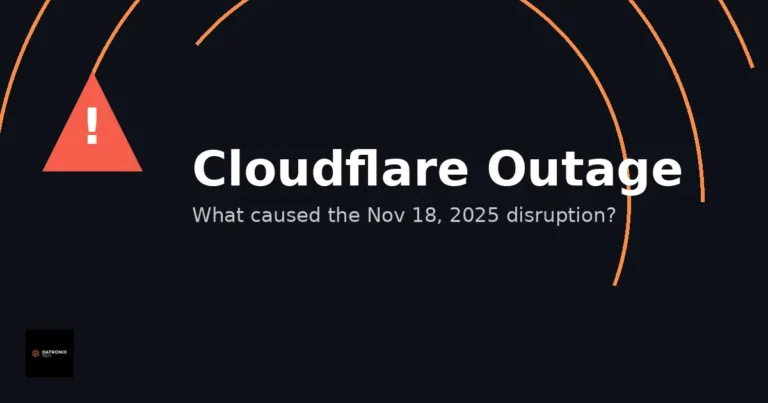Meta’s Instant Form lead ads make it easier than ever to capture contact details from Facebook and Instagram users without sending them to a landing page. But convenience comes at a cost: pre‑filled forms and one‑tap submissions often result in cheap leads who never pick up the phone or remember opting in. In this guide we’ll show you how to transform those low‑intent submissions into real prospects. By combining Meta’s newest features with smart form design and targeting strategies, you can filter out tyre‑kickers and focus on people who actually want to hear from you.
Why Lead Quality Matters
Not all leads are equal. A campaign that generates hundreds of names but produces few sales wastes ad spend and drags down your return on investment. Low‑quality leads tend to come from frictionless forms that pre‑fill data and ask little of the user. When someone can submit their details with one or two taps, they may not even realise they’ve signed up, resulting in outdated contact information and poor connection rates. High‑quality leads, on the other hand, have taken deliberate steps to provide current details and confirm their interest. They respond to follow‑ups, convert at higher rates and justify the higher cost per lead. The goal of the strategies below is to make it slightly harder for casual scrollers to submit while making it clear that serious prospects are welcome.
Why Instant Forms Struggle With Lead Quality
Instant Forms are designed for speed and convenience. They automatically pull a user’s email and phone number from their Facebook profile and allow submission with minimal friction. This “more volume” approach can be great for contests or free downloads, but it has two major downsides:
Outdated information. Many Facebook accounts were created years ago, and the pre‑filled email or phone number may no longer be valid. If your sales team calls an outdated number, no one answers.
Low recall and intent. Because there is no review step, people may forget they signed up or may submit accidentally. They’re less likely to engage when you follow up.
Fortunately, Meta and industry experts have introduced a number of tools and best practices to mitigate these issues. Here’s how to use them.
1. Choose the Right Form Type: Higher Intent vs. More Volume
When creating your Instant Form, you have two form types: More Volume and Higher Intent. More Volume keeps friction to a minimum for maximum submissions. Higher Intent adds an extra review step that acts as a “speed bump”. In this step, users must review their answers and slide a submit arrow instead of simply tapping a button. This simple barrier reminds people what they’re signing up for and gives them a chance to back out if they aren’t serious. While you’ll likely see fewer leads overall, the leads you do collect are more engaged and have self‑qualified themselves.
Tip: Always test both form types. For products or services that require consultation, coaching or high‑touch sales, the Higher Intent form usually wins on lead quality. For low‑commitment offers like free downloads, More Volume may be fine.
2. Turn Off Autofill for Key Fields
One of the biggest complaints about Instant Forms is that pre‑filled data is often outdated. Meta now allows advertisers to deselect autofill for email and phone fields. When you turn off autofill, users must manually enter their current contact information. This small amount of friction weeds out tyre‑kickers, forces people to use a working email or phone number and increases the chances that they’ll remember signing up.
Expect your cost per lead to rise when you turn off autofill, but note that your lead‑to‑customer conversion rate should also climb. If your business depends on accurate contact details, this feature is essential.
3. Require SMS Verification
Meta’s new SMS verification option goes even further. When enabled, people must provide their phone number, receive a one‑time password (OTP) via text and enter it to complete the form. This filters out fake numbers, bots and people who aren’t willing to take the extra step. For businesses that rely on phone calls or SMS flows, this feature drastically improves contact rates. Keep in mind that some countries or audiences may be less accustomed to SMS verification, so test before rolling it out across all campaigns.
4. Add Qualifying Questions
The questions you include in your form play a major role in lead quality. Asking more detailed questions, such as budget, timeline, industry or needs, forces potential leads to self‑qualify. WordStream recommends using custom questions and asking for details to weed out casual browsers. Someone who isn’t serious won’t take the time to fill out five or more questions. Driftrock agrees, noting that asking qualifying questions is one of the simplest ways to boost lead intent. Examples include:
What is your monthly advertising budget?
When are you looking to start?
How would you rate your familiarity with [product/service]?
Just remember to strike a balance: ask only for information your sales team will actually use. Too many irrelevant questions will frustrate even interested prospects.
5. Use Conditional Logic and Give Users an Out
Meta now allows you to build conditional logic into your Instant Forms. With this activated, the form can display follow‑up questions, end the form or send the user to an end screen based on their responses This is powerful because it lets you filter out unqualified leads before they’re submitted. For example, if a user indicates they are not looking to purchase in the next six months, you can send them to an end screen thanking them for their time rather than sending their contact to your sales team. Giving people an option like “I’m not interested” ensures that only those with genuine intent complete the form.
6. Craft a Pre‑Qualifying Greeting
Instant Forms allow a greeting section above the form fields. WordStream suggests using this space to set expectations and pre‑qualify prospects. For instance, if you plan to call leads within an hour, say so. Driftrock recommends telling users you will contact them by phone; this discourages people who aren’t ready to talk. A clear greeting acts as another filter and reduces surprise for genuine leads.
7. Turn Flexible Form Delivery On
Meta’s Flexible Form Delivery feature automatically adjusts your form structure depending on what people are most likely to respond to It can remove the background image, change the greeting placement, reorder questions and skip optional fields. This dynamic optimisation helps maximise completion rates without sacrificing lead intent. You can also choose which elements Meta can adjust to maintain control over brand presentation.
8. Build Better Audiences: Lookalikes & Exclusions
Lead quality isn’t just about the form—it starts with who sees your ads. Driftrock recommends creating lookalike audiences based on leads who have converted into customers and excluding past leads to avoid retargeting people who already expressed interest. When you feed high‑quality conversion data back into Meta’s algorithm, it learns to find people similar to your best customers. You should also test stacking broad targeting with first‑party data signals such as website visitors, CRM lists and video viewers. Combining audience exclusions and lookalikes ensures you’re not paying for duplicate or low‑intent leads.
9. Optimise Your Ad Creative
The ad that drives traffic to your form sets expectations for lead quality. WordStream emphasises that you should align your ad copy and creative with your form. Use compelling visuals and messaging that clearly describe your offer and call out who it’s for. If you want high‑value leads, avoid broad, click‑bait language. Instead, mention the price range, industry or problem you solve. Be honest about next steps and qualification requirements. This will reduce wasted clicks and attract people who are truly interested.
10. Follow Up Quickly and Nurture Properly
Even the best forms can’t guarantee conversions without proper follow‑up. WordStream notes that following up within 24–48 hours keeps leads engaged and improves conversion rates. Set up an automated email or SMS sequence to deliver immediate value (e.g., a guide or webinar) and schedule a call or meeting. Also implement a process to remove leads from nurture flows after a period of inactivity. By focusing your sales team on engaged prospects, you save time and avoid annoying people who aren’t interested.
11. Sync Leads to Your CRM and Clean Your Data
Finally, quality leads come from quality data management. Use Meta’s native integrations or a third‑party tool to sync leads to your CRM in real time. Ensure phone numbers and emails are validated before they hit your sales pipeline. Driftrock suggests cleansing invalid leads before sending them to your CRM to maintain data hygiene. Tracking lead outcomes (e.g., did they answer, did they buy?) allows you to feed high‑quality data back into Meta and refine your audiences over time.
Conclusion
Meta lead ads remain a powerful way to capture interest without sending people off‑platform. However, the default settings prioritise quantity over quality. By switching to Higher Intent forms, turning off autofill, requiring SMS verification, asking qualifying questions, leveraging conditional logic and flexible delivery, and improving audience targeting and follow‑up processes, you can transform Instant Forms from a volume play into a source of high‑value leads. As Meta continues to roll out features aimed at improving lead quality, take advantage of them early and test what works for your business. Remember: when it comes to lead generation, quality beats quantity every time.




